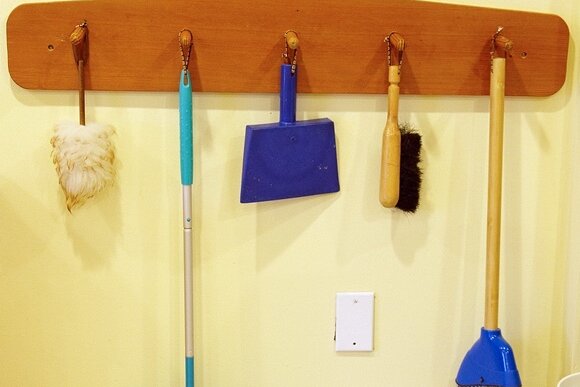
The Prepared Montessori Environment
— Maria Montessori, The Secret of Childhood“The first aim of the prepared environment is, as far as it is possible, to render the growing child independent of the adult.”
The prepared environment is one of the three essential ingredients in the “recipe” for a successful Montessori program, along with the trained adult and the mixed-age community of children. A good way to look at it is as an equilateral triangle, with each aspect having equal importance. Without the three-year mixed-age group of children, the opportunity for peer-to-peer learning, modeling, and nurturing is greatly diminished. The beautifully prepared environment provides developmentally appropriate and enticing activities and materials, without which independent activity and self-direction would be less likely to occur. And the Montessori-trained adult prepares the environment, links each child to the activities to support their individual growth and development, and observes the group and the individuals to determine what to present next, how, and when.
What, then, are the physical hallmarks of a prepared environment?
- Beauty, tranquility, non-cluttered, filled with natural light, art, plants, and animals and ideally with an extension to the outdoors
- Child-sized furnishings and a variety of individual (non-assigned) work spaces to allow for the children’s freedom of movement and activity: tables, chairs, floor tables, and rugs/mats to define a child’s work space and to promote individual and group activity
- A full set of Montessori curriculum materials, fully accessible to the children. The materials themselves are arranged not only by curriculum area, but in a logical progression on the shelves. When children have had a presentation on a material or activity, and it is available on the shelf, they are free to choose it, work with it as long as they like, and return it to the shelf for the next child
- Reality-based materials made of wood, glass, porcelain, natural fibers, etc. that reflect the material culture the children live in. For instance, any properly prepared Primary classroom for children 2 ½ – 6 years old will contain the standard materials in all areas of the curriculum (materials like the Bead Cabinet, the Metal Insets, the Puzzle Maps, et al), but the furnishings, books, and Practical Life activities will likely be very different depending upon the region, climate, language, and culture
- A place for each child to store their personal belongings, and the means to care for their physical needs
What are the psychological aspects of the prepared environment?
- The physical order present in the classroom (the arrangement of the furnishings, the self-contained, logical arrangement of materials both on the shelves and in the room, the cycle of choosing/doing/putting away, and consistent routines and expectations) all support the growing mental order of the child, allowing her to make sense of her world
- The freedom of movement, for social interaction, and for exploration leads ultimately to the greater freedom: freedom of choice
- Natural and logical limits, logical consequences, “friendliness with error”, and kind, fair, non-punitive discipline leads to psychological safety – for “to let the child do as he likes when he has not yet developed any powers of control is to betray the idea of freedom.” (Dr. Montessori)
Lastly, another great quote from Dr. Montessori: “The greatest sign of success for a teacher is to be able to say, ‘The children are now working as if I did not exist.’” (The Absorbent Mind). This simultaneously acknowledges the guide’s essential role in knowing how to prepare the environment and when to connect each child to specific activities and materials, and then when to recede and let the child develop and grow through her or his own independent activity within the environment.
